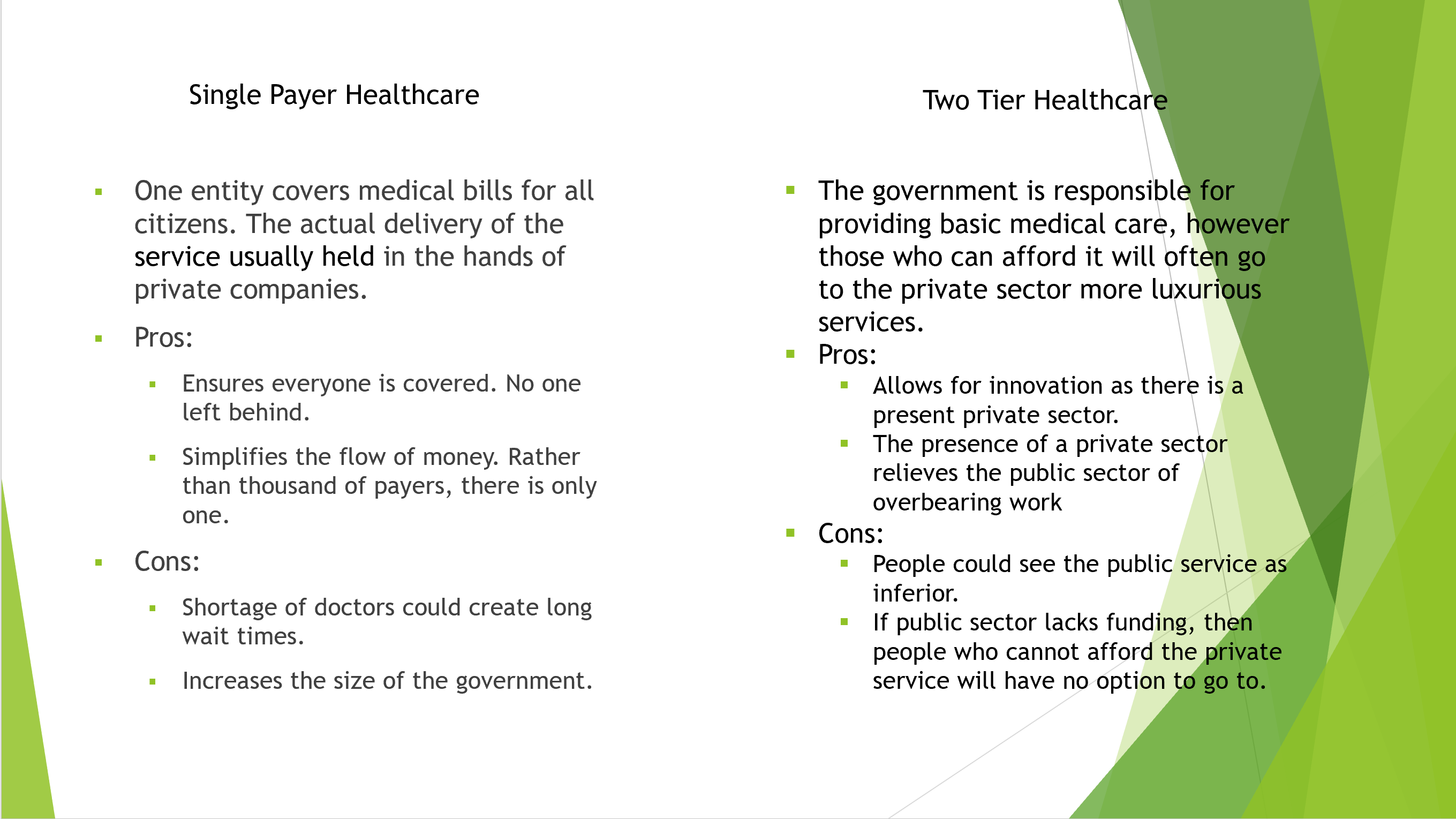What Does How Does Health Care Policy-making Operate In The United States? Mean?
A student when disagreed with him and when Dr. Sigerist asked him to estimate his authority, the student shouted, "You yourself stated so!" "When?" asked Dr. Sigerist. "3 years earlier," addressed the student. "Ah," said Dr. Sigerist, "three years is a very long time. I've changed my mind ever since." I guess for me this speaks to the altering tides of opinion and that whatever remains in flux and open up to renegotiation.
Much of this talk was paraphrased/annotated straight from the sources below, in particular the work of Paul Starr: Bauman, Harold, "Bordering On National Health Insurance since 1910" in Changing to National Health Care: Ethical and Policy Issues (Vol. 4, Principles in a Changing World) modified by Heufner, Robert P. and Margaret # P.
" Increase President's Plan", Washington Post, p. A23, February 7, 1992. Brown, Ted. "Isaac Max Rubinow", (a biographical sketch), American Journal of Public Health, Vol. 87, No. 11, pp. 1863-1864, 1997 Danielson, David A., and Arthur Mazer. "The Massachusetts Referendum for a National Health Program", Journal of Public Health Policy, Summer 1986.
" Visit this link Your Home of Falk: The Paranoid Design in American House Politics", American Journal of Public Health", Vol. 87, No. 11, pp. 1836 1843, 1997. Falk, I (how to qualify for home health care).S. "Proposals for National Medical Insurance in the USA: Origins and Advancement and Some Viewpoints for the Future', Milbank Memorial Fund Quarterly, Health and Society, pp.
Gordon, Colin. "Why No National Medical Insurance in the US? The Limits of Social Arrangement in War and Peace, 1941-1948", Journal of Policy History, Vol. 9, No (how to take care of your mental health). 3, pp. 277-310, 1997. "History in a Tea Wagon", Time Magazine, No. 5, pp. 51-53, January 30, 1939. Marmor, Ted. "The History of Health Care Reform", Roll Call, pp.
Navarro, Vicente. "Case history as a Validation Rather than Explanation: Review of Starr's The Social Transformation of American Medicine" International Journal of Health Solutions, Vol. 14, No. 4, pp. 511-528, 1984. Navarro, Vicente. "Why Some Countries Have National Medical Insurance, Others Have National Health Service, and the United States has Neither", International Journal of Health Providers, Vol.
Unknown Facts About When Is Health Care Vote
3, pp. 383-404, 1989. Rothman, David J. "A Century of Failure: Health Care Reform in America", Journal of Health Politics, Policy and Law", Vol. 18, No. 2, Summer season 1993. Rubinow, Isaac Max. "Labor Insurance Coverage", American Journal of Public Health, Vol. 87, No. 11, pp. 1862 1863, 1997 (Initially published in Journal of Political Economy, Vol.
362-281, 1904). Starr, Paul. The Social Transformation of American Medication: The rise of a sovereign profession and the making of a huge industry. Standard Books, 1982. Starr, follow this link Paul. "Improvement in Defeat: The Altering Goals of National Health Insurance, 1915-1980", American Journal of Public Health, Vol. 72, No. 1, pp. 78-88, 1982 - what is health care fsa.

" Crisis and Modification in America's Health System", American Journal of Public Health, Vol. 63, No. 4, April 1973. "Towards a National Medical Care System: II. The Historic Background", Editorial, Journal of Public Health Policy, Fall 1986. Trafford, Abigail, and Christine Russel, "Opening Night for Clinton's Plan", Washington Post Health Publication, pp.
The United States does not have universal medical insurance coverage. Almost 92 percent of the population was approximated to have coverage in 2018, leaving 27.5 million people, or 8.5 percent of the population, uninsured. 1 Motion toward securing the right to health care has been incremental. 2 Employer-sponsored health insurance was introduced throughout the 1920s.
In 2018, about 55 percent of the population was covered under employer-sponsored insurance. 3 In 1965, the very first public insurance programs, Medicare and Medicaid, were enacted through the Social Security Act, and others https://diigo.com/0ivnr1 followed. Medicare. Medicare ensures a universal right to healthcare for individuals age 65 and older. Qualified populations and the range of benefits covered have slowly expanded.
All recipients are entitled to traditional Medicare, a fee-for-service program that provides healthcare facility insurance (Part A) and medical insurance coverage (Part B). Because 1973, beneficiaries have actually had the option to receive their coverage through either standard Medicare or Medicare Benefit (Part C), under which individuals register in a private health care organization (HMO) or managed care organization (what might happen if the federal government makes cuts to health care spending?).
Not known Incorrect Statements About What Home Health Care Is Covered By Medicare
Medicaid. The Medicaid program first provided states the choice to get federal matching funding for supplying healthcare services to low-income households, the blind, and individuals with impairments. Coverage was slowly made mandatory for low-income pregnant ladies and babies, and later for kids as much as age 18. Today, Medicaid covers 17.9 percent of Americans.
People need to look for Medicaid protection and to re-enroll and recertify yearly. As of 2019, more than two-thirds of Medicaid recipients were registered in managed care organizations. 4 Children's Health Insurance Program. In 1997, the Children's Medical insurance Program, or CHIP, was developed as a public, state-administered program for children in low-income households that make excessive to get approved for Medicaid but that are not likely to be able to manage personal insurance coverage.
5 In some states, it operates as an extension of Medicaid; in other states, it is a separate program. Budget-friendly Care Act. In 2010, the passage of the Patient Security and Affordable Care Act, or ACA, represented the biggest expansion to date of the federal government's role in funding and regulating health care.

The ACA resulted in an estimated 20 million getting coverage, reducing the share of uninsured adults aged 19 to 64 from 20 percent in 2010 to 12 percent in 2018.6 The federal government's responsibilities consist of: setting legislation and national methods administering and spending for the Medicare program cofunding and setting basic requirements and guidelines for the Medicaid program cofunding CHIP financing health insurance for federal employees in addition to active and past members of the military and their families managing pharmaceutical products and medical devices running federal markets for personal medical insurance offering premium aids for private market coverage.
The ACA developed "shared duty" amongst federal government, companies, and individuals for ensuring that all Americans have access to economical and good-quality health insurance coverage. The U.S. Department of Health and Person Providers is the federal government's principal company involved with healthcare services. The states cofund and administer their CHIP and Medicaid programs according to federal policies.
They also assist fund medical insurance for state workers, regulate private insurance coverage, and license health professionals. Some states likewise manage medical insurance for low-income homeowners, in addition to Medicaid. In 2017, public costs represented 45 percent of total health care spending, or roughly 8 percent of GDP. Federal spending represented 28 percent of total health care costs.
The Buzz on What Is Single Payer Health Care?
The Centers for Medicare and Medicaid Services is the largest governmental source of health protection funding. Medicare is financed through a mix of basic federal taxes, a mandatory payroll tax that spends for Part A (medical facility insurance coverage), and individual premiums. Medicaid is mainly tax-funded, with federal tax earnings representing two-thirds (63%) of expenses, and state and local incomes the rest.
CHIP is funded through matching grants supplied by the federal government to states. Many states (30 in 2018) charge premiums under that program. Investing in personal health insurance accounted for one-third (34%) of total health expenditures in 2018. Private insurance coverage is the main health coverage for two-thirds of Americans (67%).
